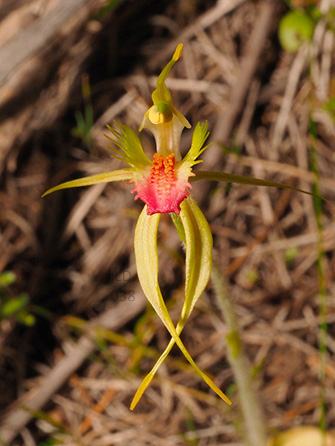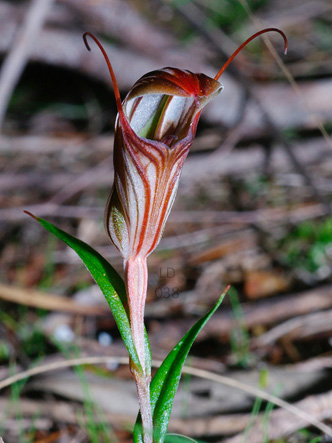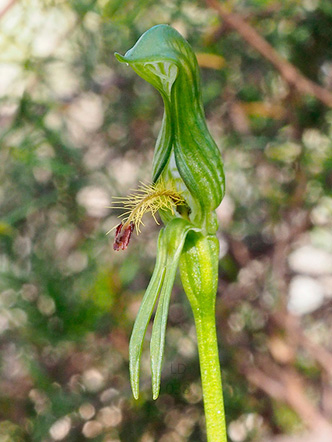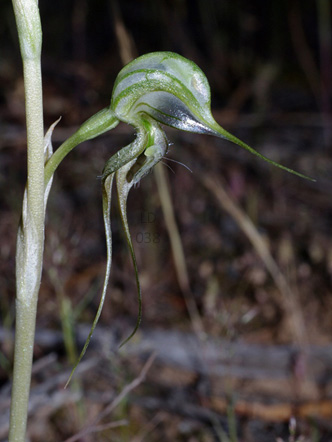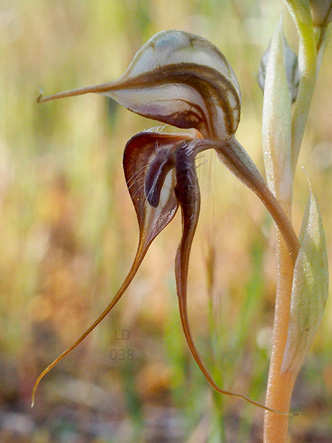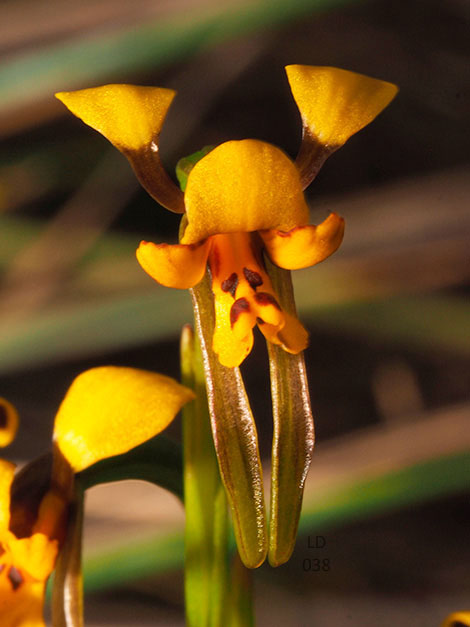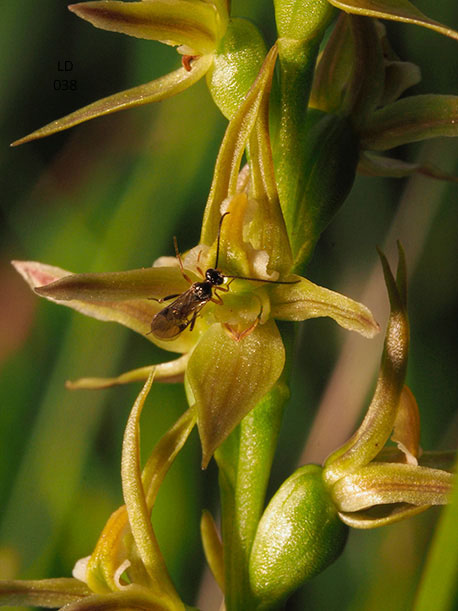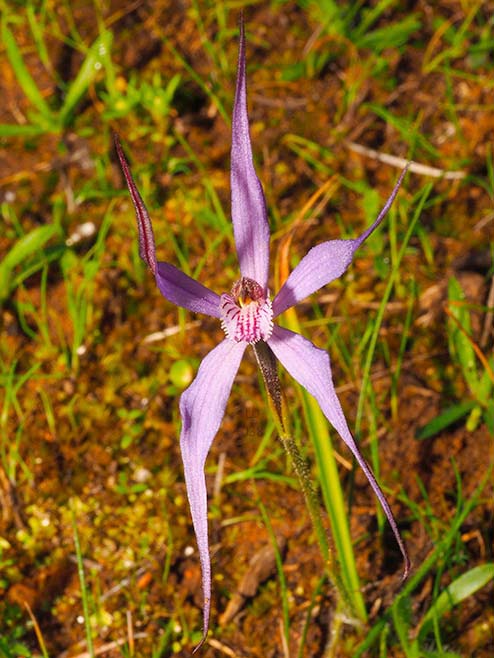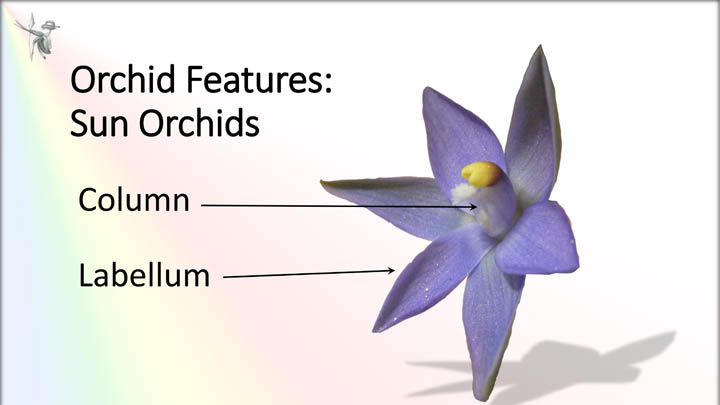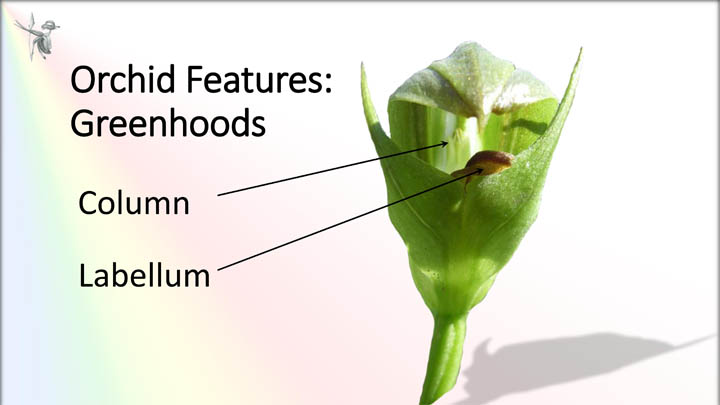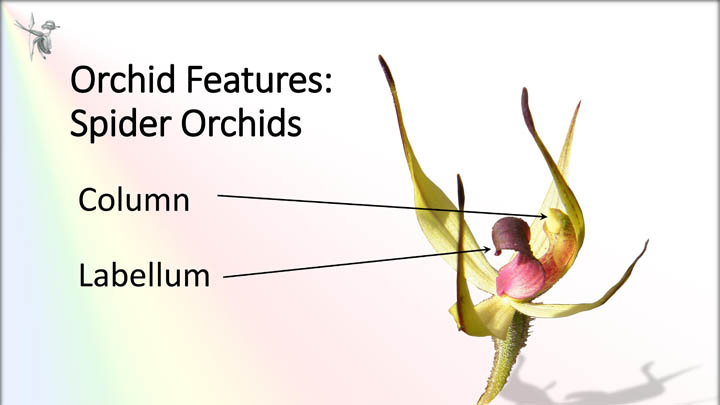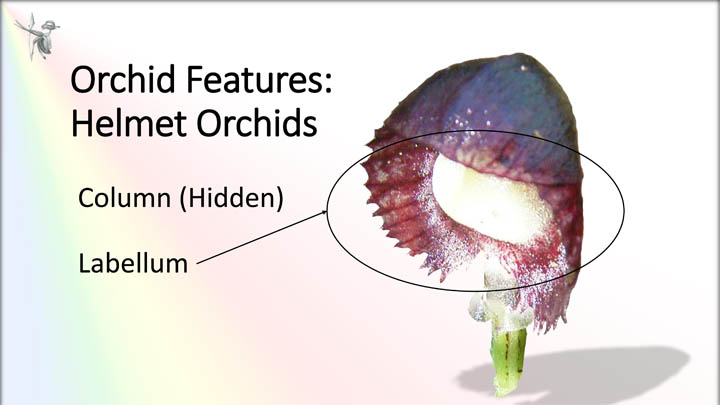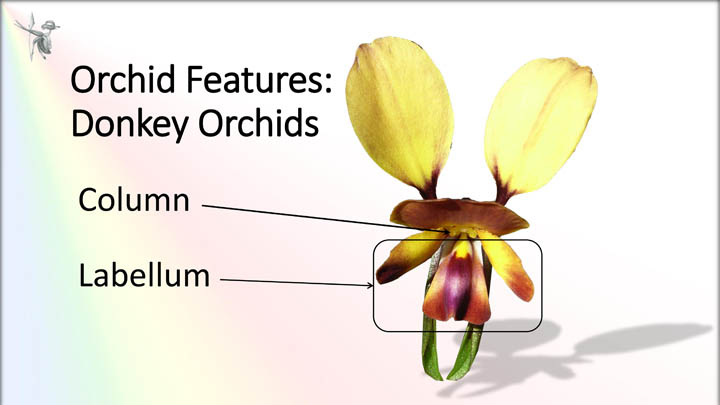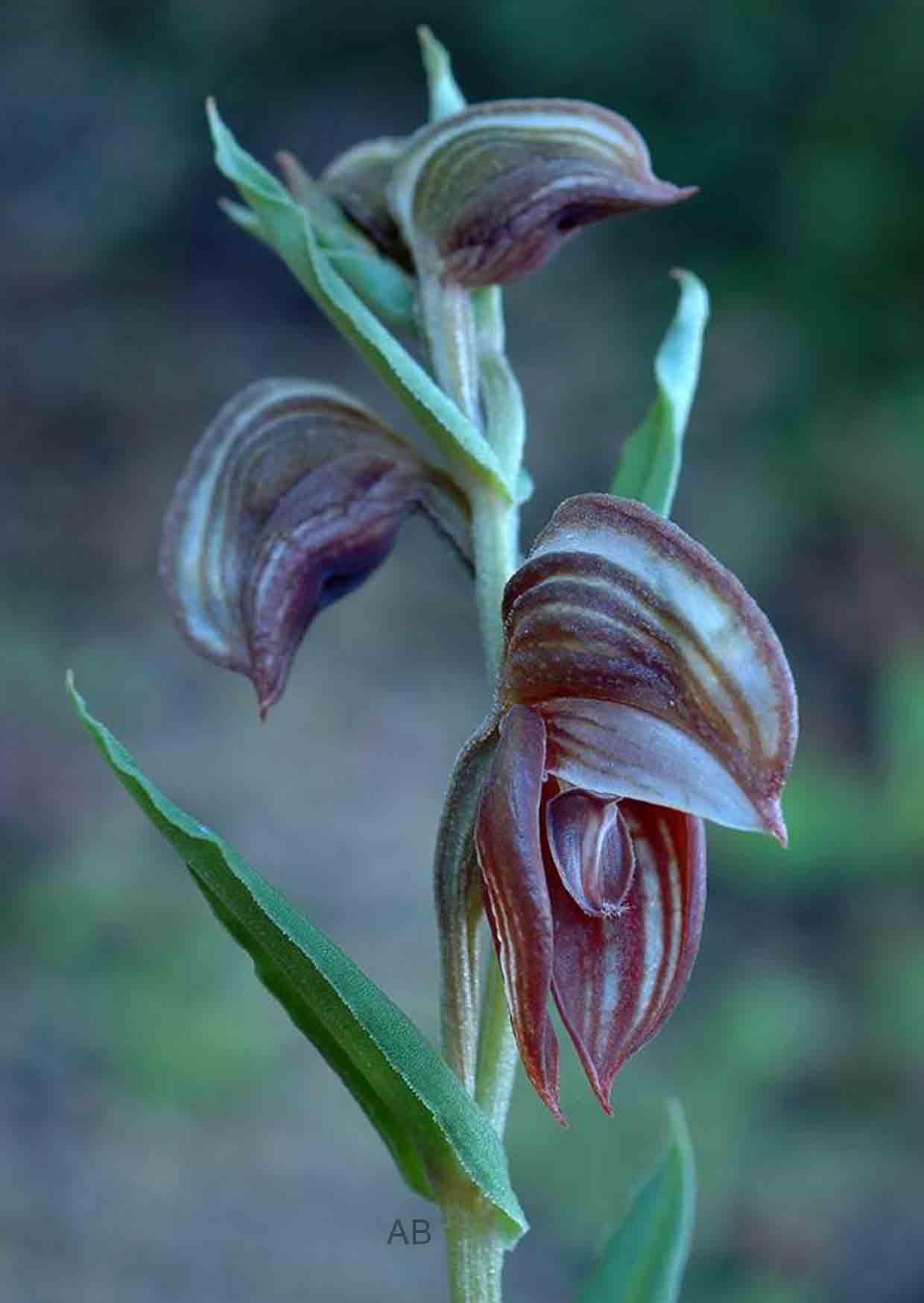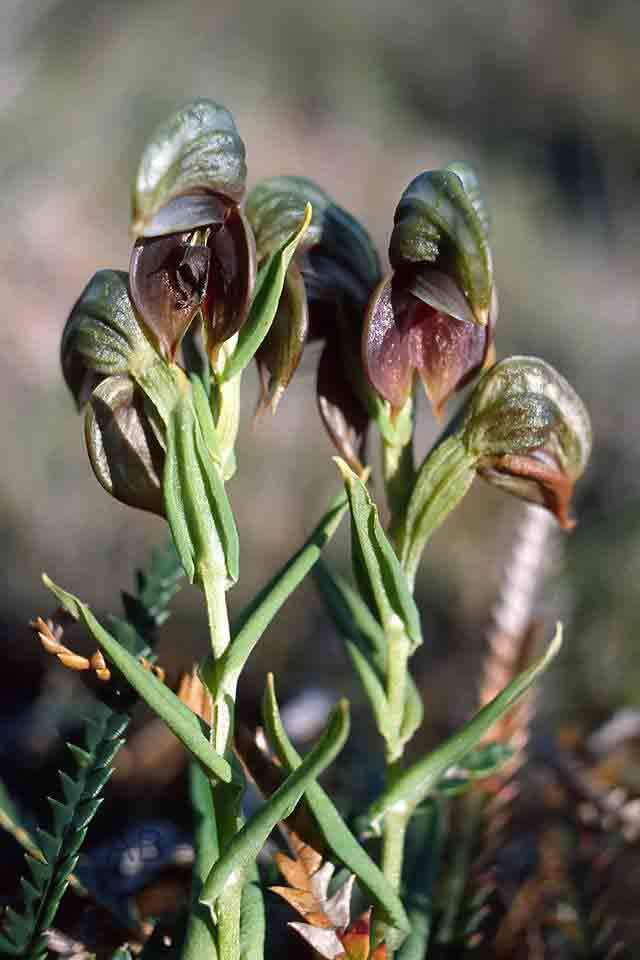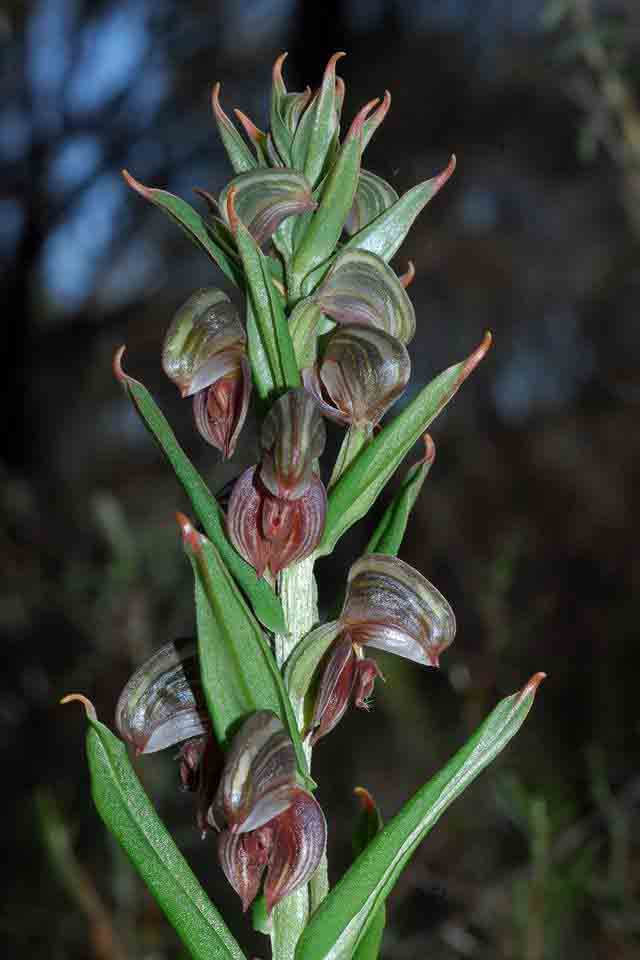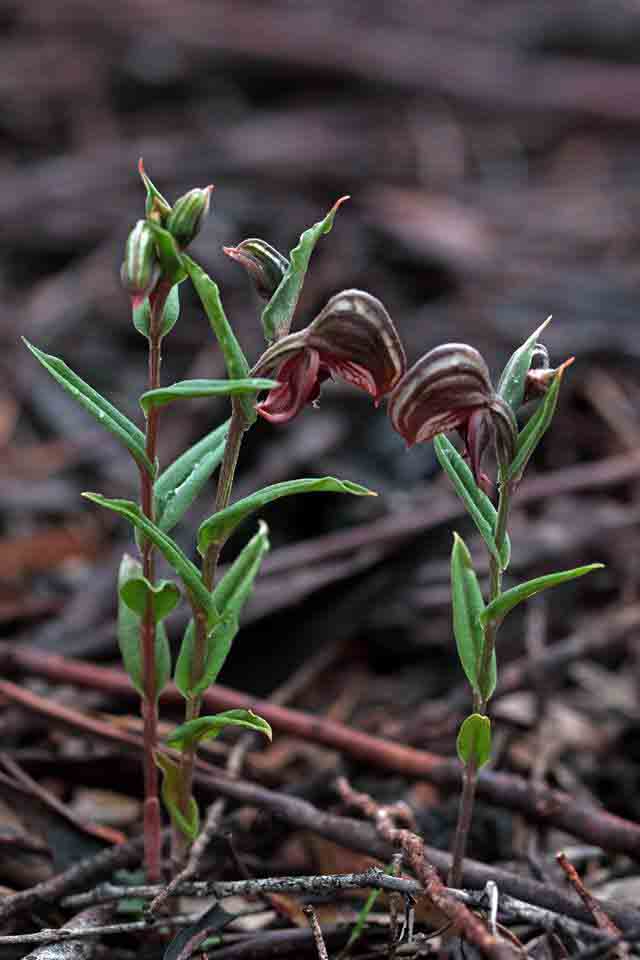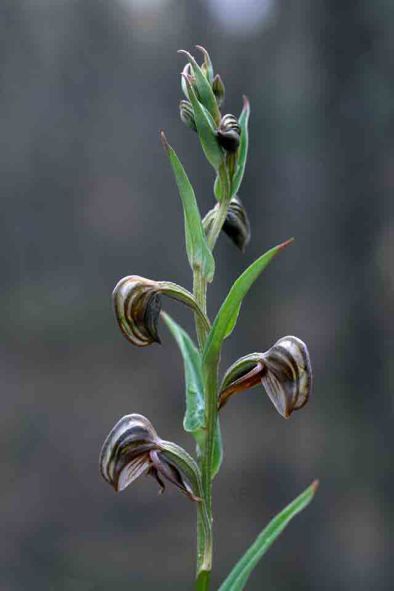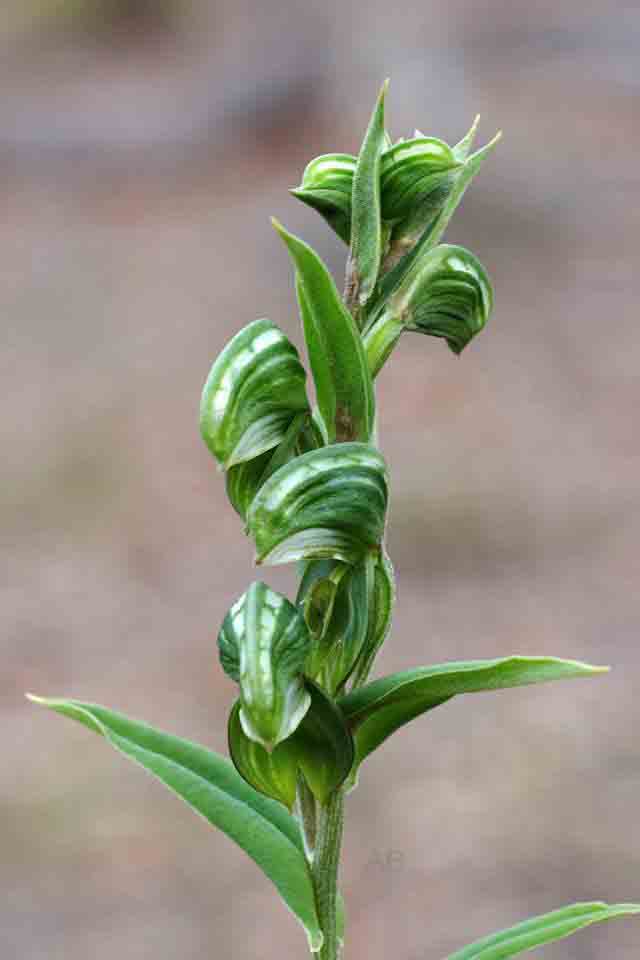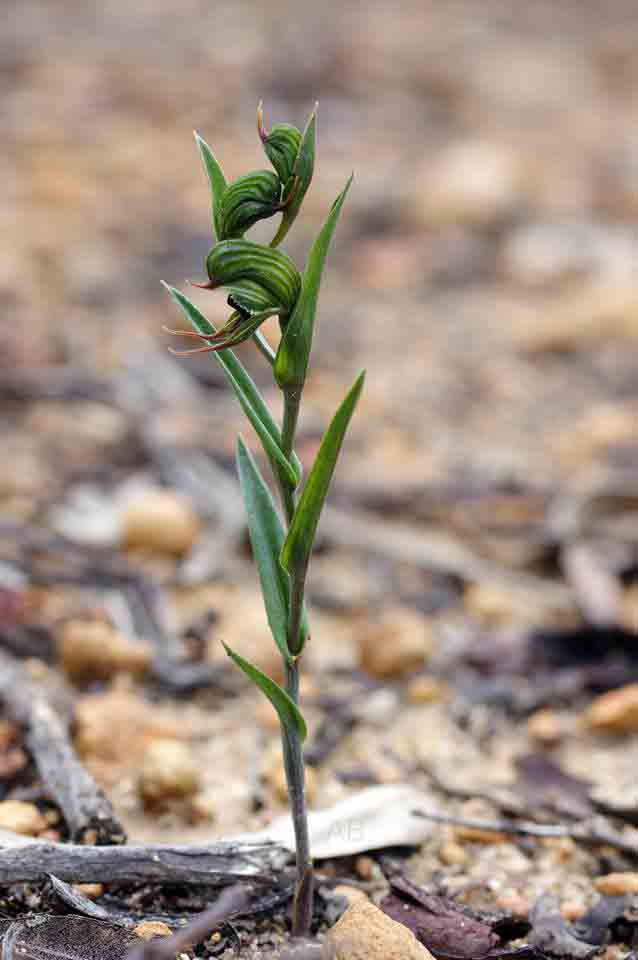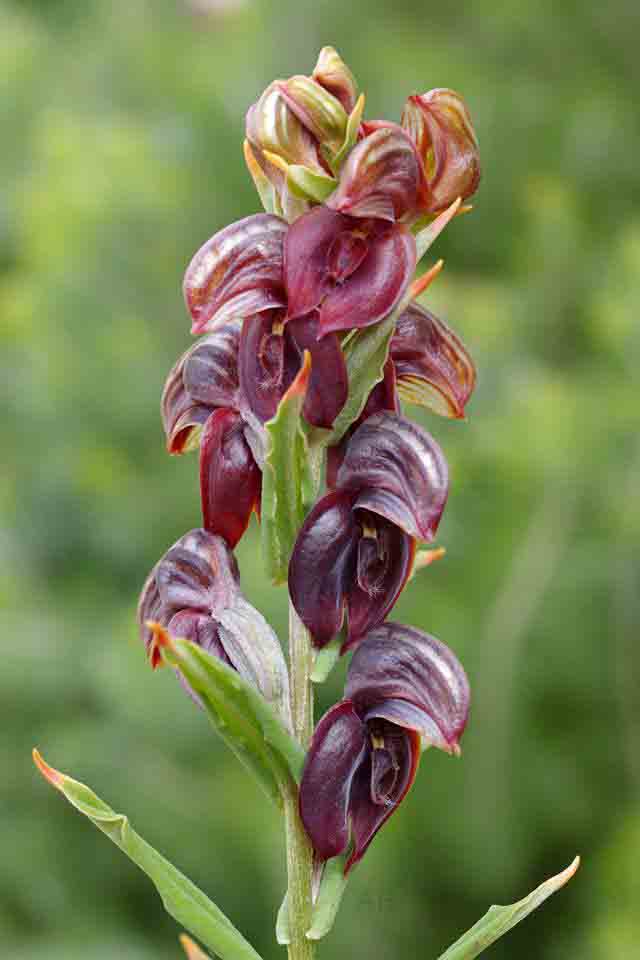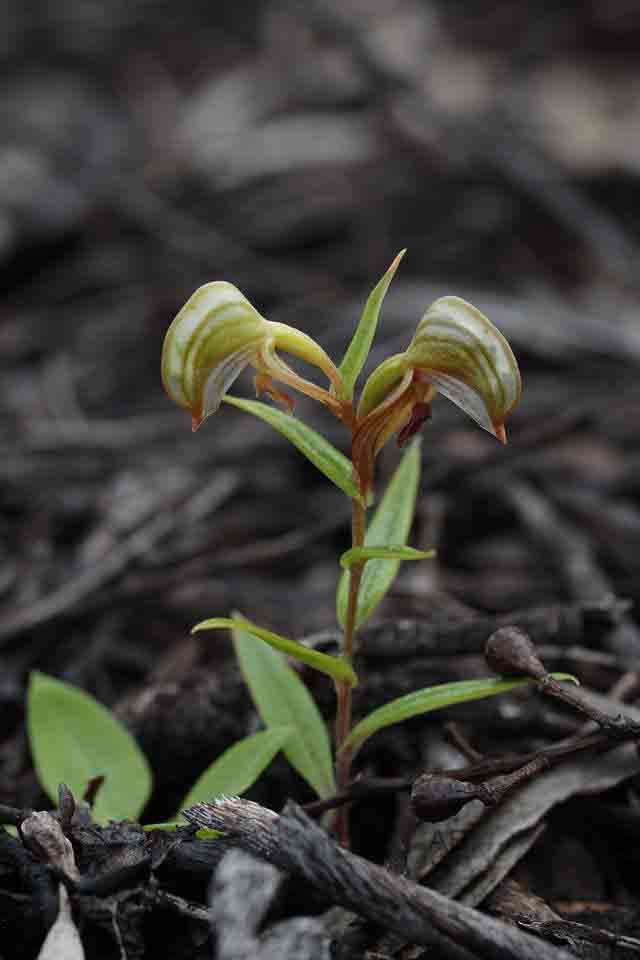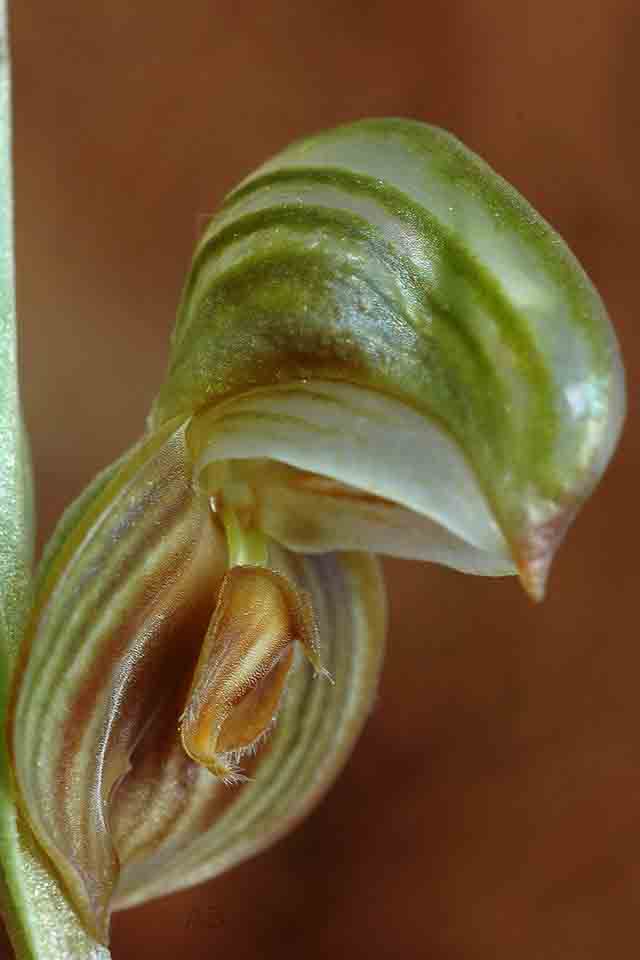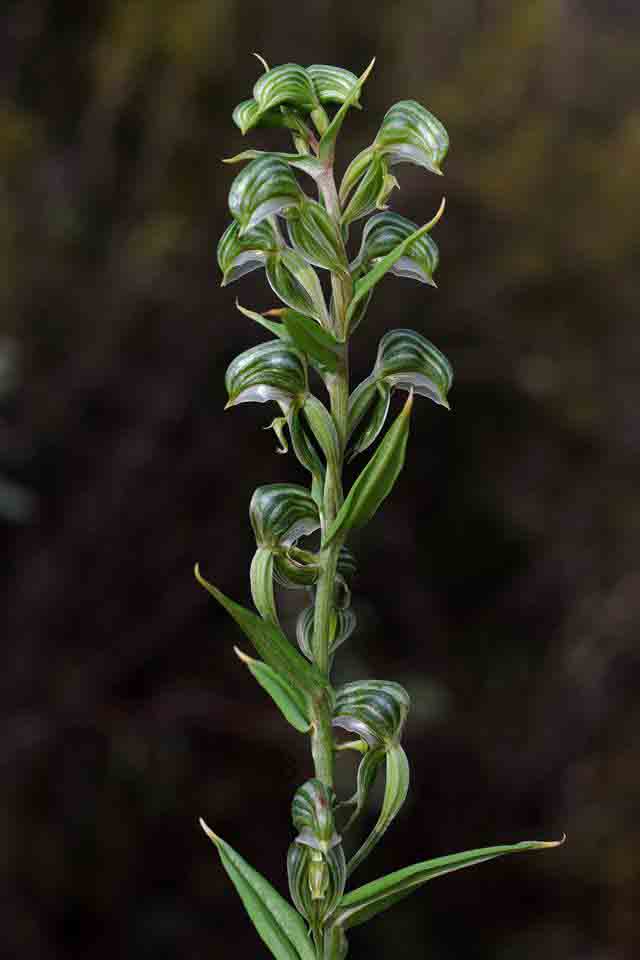The following article by Rosalie Lawrence appeared in the electronic version of the Native Orchid Society of South Australia Journal, Vol 47 #6 July 2023. For the purpose of this article, the segregate genera Bunochilus was used to narrow it down and differentiate it from the rest of the Pterostylis genus. This article includes additional information not in the Journal article
Recently Robert & I visited Diamond Creek, Victoria where we photographed a Bunochilus which we thought looked remarkably similar to our hills B viriosus. Anyway it was subsequently identified on iNaturalist as B smaragdynus. In the iNats comments, the Victorians often mentioned the meeting together of the broad basal flanges within the flower as an identifying feature.
So on our recent NOSSA trip to Hardy’s Scrub, Robert made it a point to photograph the basal flanges of the Bunochilus. I too did the same. Lo and behold, we had flowers with the flanges touching and others where it did not! So did we have two species of Bunochilus at Hardy’s Scrub?
Well when we get home we read June’s descriptions for the two species and note that she has underlined the touching of the basal flanges for B smaragdynus but mentions in the description of B viriosus that they can also touch. Puzzlement! Solution – give June a call! It’s always great chatting with June because it is hard to get everything into one small volume and with talking a better picture emerges.
After talking to June, keeping in mind what we discussed, I then spent time on iNaturalist viewing all 285 observations of B smaragdynus and 115 B viriosus observations but I soon noticed from the Victorian commentators that I also needed to look at the 41 B chlorogramma and some of the B melagramma observations (1,619 was way too many to go through!). I also viewed Vicflora pages on the description of their three species.
Basal flanges of Bunochilus viriosus not touching
Photographer Robert Lawrence
The following is what I noticed
- The Victorians were often using the flanges as an identifying feature for identifying B melagramma
- There was great difficulty in separating out B chlorogramma from B smaragdynus. To quote one Victorian – ‘It is notoriously difficult to tell the difference between P smaragdya & P chlorogramma’
- B melagramma has small basal flanges (appear parallel) and never touch but the other three species have well developed basal flanges (triangular shaped) and may or may not touch (see Vicflora’s descriptions).
- Published descriptions of the species occurred
~ Pterostylis smaragdyna 1993
~ B chlorogramma 2002
~ B melagramma 2002
~ B viriosus 2006
But it was the differences between B smaragdynus and B viriosus that I needed to look up and particularly whether the flanges were of significance or not. Also, June has always stressed that features are not hard and fast, so I needed to keep that in mind as I made my comparison.
My general observations of the observations of B smaragdynus and B. viriosus are~
- B smaragdynus
- Although most flowers opened at once, there was still a large proportion that didn’t
- Flowers mainly a few and tended to be top heavy
- There were some pollinated flowers
- Along the way, I noticed the growth habitat (when I could see the background), was at the most one or two, or to quote Gary Backhouse – “small, sparse colonies”
- Basal flanges did not always touch but were always a wedge shape
- B viriosus
- Most flowers opened consecutively but there were some where all the flowers opened at once.
- Mainly lots of flowers on an inflorescence but there was a reasonable amount with just one or two flowers.
- Growth habit, probably the most notable difference, colonies consisted of several flowering plants (sparse would not be the word to apply!)
- Did not see any pollinated flowers
- Rare to find an image of the flanges, but they were variable concerning touching yet always wedge shape
Basal flanges of Bunochilus viriosus touching
Photographer Rosalie Lawrence
Conclusion
There doesn’t appear to be a reason to include observing the flanges as there is no difference between these two species. But when there is a possibility of B melagramma being present such as in the South East and on Kangaroo Island, then it becomes necessary to include looking at the flanges when making an observation.
A surprise was to notice that the growth habit is significant point of difference between B viriosus and B smaragdynus as I was mainly looking at the flanges. Of course, there are some other features to be considered but that is for another time.
A curiosity, whilst researching this article I discovered that Diamond Creek is the type location for B smaragdynus
For images of basal flanges see page 202 of June’s book.





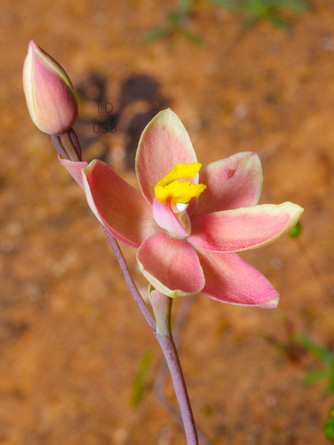 Fig 1: Thelymitra antennifera hybrid
Fig 1: Thelymitra antennifera hybrid 